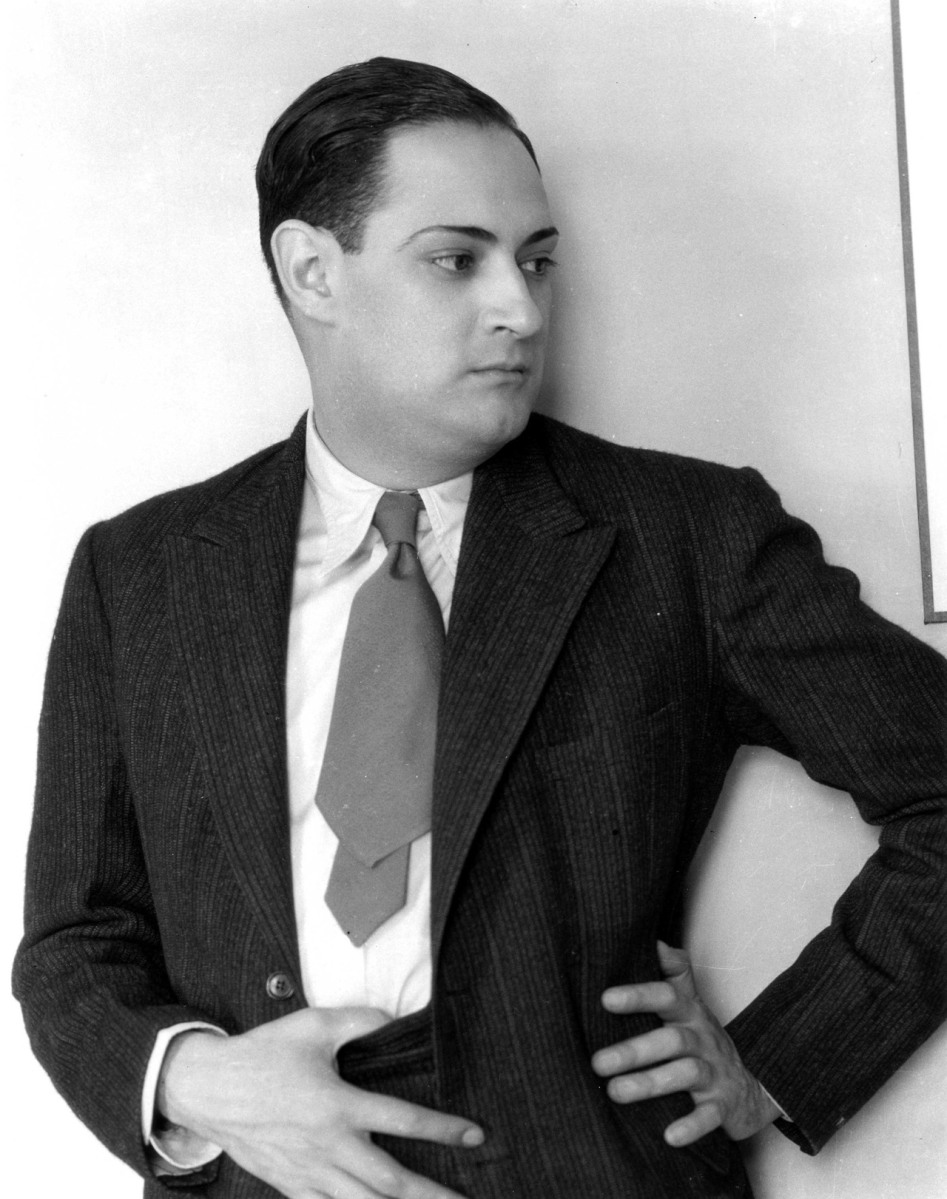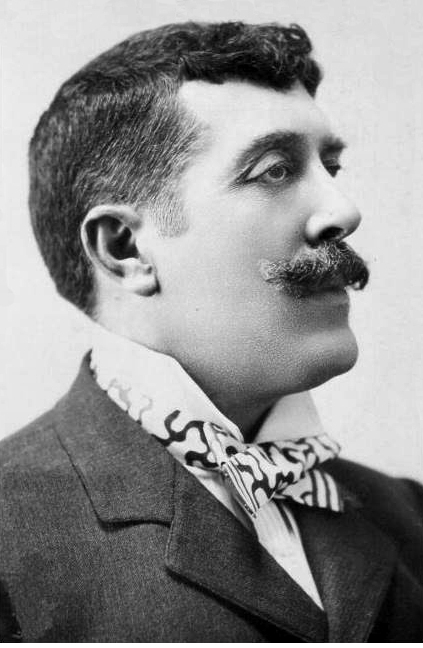|
Gay Wisdom for Daily Living brought to you by White Crane Institute ͏ ͏ ͏ ͏ ͏ ͏ ͏ ͏ ͏ ͏ ͏ ͏ ͏ ͏ ͏ ͏ ͏ ͏ ͏ ͏ ͏ ͏ ͏ ͏ ͏ ͏ ͏ ͏ ͏ ͏ ͏ ͏ ͏ ͏ ͏ ͏ ͏ ͏ ͏ ͏ ͏ ͏ ͏ ͏ ͏ ͏ ͏ ͏ ͏ ͏ ͏ ͏ ͏ ͏ ͏ ͏ ͏ ͏ ͏ ͏ ͏ ͏ ͏ ͏ ͏ ͏ ͏ ͏ ͏ ͏ ͏ ͏ ͏ ͏ ͏ ͏ ͏ ͏ ͏ ͏ ͏ ͏ ͏ ͏ ͏ ͏ ͏ ͏ ͏ ͏ ͏ ͏ ͏ ͏ ͏ ͏ ͏ ͏ ͏ ͏ ͏ ͏ ͏ ͏ ͏ ͏ ͏ ͏ ͏ ͏ ͏ ͏ ͏ ͏ ͏ ͏ ͏ ͏ ͏ ͏ ͏ ͏ ͏ ͏ ͏ ͏ ͏ ͏ ͏ ͏ ͏ ͏ ͏
|
|
||||
| This Day in Gay History | ||||
July 30Born 1904 - SALVADOR NOVO (d: 1974) was born on this date. A Mexican writer, poet, playwright, translator, television presenter, entrepreneur, he was the official chronicler of Mexico City, his birthplace and home. As a noted intellectual, he influenced popular perceptions of politics, media, the arts, and Mexican society in general. Novo defied the machismo and conservative Catholicism prevalent in 20th century Mexican culture by making almost no efforts to conceal his homosexuality. He was, however, accepted by the Mexican government. He held official posts related to culture, was elected to the Mexican Language Academy, and had a television program on Mexico City's history. Towards the end of his life, he dyed his hair a bright carrot color and wore many ostentatious rings and colored suits. He has been compared to Oscar Wilde, but unlike Wilde, Novo never suffered the setback of scandal or persecution and remained an accepted and respected member of society and governmental circles until his death. In fact, some sectors resented the fact that a gay writer would align himself so closely with the government and media after the repression of social movements in the 1960s and 1970s. He was well known for his wit. When a party, where young soldiers had been invited by homosexual intellectual friends of his, had degenerated into a fight and a scandal, Salvador Novo brushed off the whole matter with a factual: "This is what happens when members of the intellectual elite try to enter military circles." In accordance with tradition, the street on which he lived was renamed after him when he assumed the role of Mexico City's official chronicler, a post held for life. 1910 - EDGAR DE EVIA (d. 2003) American photographer, born in Mérida, Yucatán. He moved with his family to New York City in 1915. From 1966 until his death, de Evia's companion and business partner was interior designer, David McJonathan-Swarm. In a career that spanned the 1940s through the 1990s, his photography appeared in magazines and newspapers such as Town & Country, House & Garden, Look and The New York Times Magazine and advertising campaigns for Borden Ice Cream, Owens-Corning Fiberglas Corporation, Jell-O among other corporations. Frequently producing images using soft focus and diffusion, de Evia was dubbed a "master of still life" in the 1957 publication Popular Photography Color Annual. In a review of the book, The New York Times stated that "Black and white [photography] is frequently interspersed through the book and serves as a reminder that black and white still has a useful place, even in a world of color, often more convincingly as well. This is pointed up rather persuasively in the portfolio on Edgar de Evia as a 'master of still life' and in the one devoted to the work of Rene Groebil." Editorial high-key food photography was introduced by Edgar D'Evia in 1953 for the pages of Good Housekeeping. De Evia also produced commissioned photographic portraits of individuals well known in the social, film, music, and theatre worlds, including Ethel Fogg (Mrs. William Brooks Clift), mother of Montgomery Clift; Erik Rhodes, American film and Broadway singer and actor; Nordstrom Sisters, American sister act, international cabaret singers; Roman Totenberg, Polish-American violinist and Ralph Lauren, American fashion designer. Died 1906 - French poet and Symbolist novelist JEAN LORRAIN died on this date (b. 1855) Born Paul Duval, Lorrain was a dedicated disciple of dandyism, and (for the times) openly homosexual. Lorrain wrote a number of collections of verse, including La forêt bleue (1887) and L'ombre ardente, (1892). He is also remembered for his decadent novels and short stories, such as Monsieur de Phocas (1901) and Histoires des masques (1900), as well as for one of his best novels, Sonyeuse, which he links to portraits exhibited by Antonio de La Gandara in 1893. 1996 - CLAUDETTE COLBERT, French-American actress died (b. 1903) Famously said to have been one of Marlene Dietrich’s lovers (well really…who wasn’t?) when she died most of Colbert's estate, estimated at $3.5 million and including her Manhattan apartment and villa in Barbados, was left to Helen O'Hagan (1931— ), a retired director of corporate relations at Saks Fifth Avenue, whom Colbert had met in 1961 on the set of the actress's last film, Parrish, with Troy Donahue. The villa was later purchased by David Geffen. Noteworthy 1965 - President Lyndon B. Johnson signs the SOCIAL SECURITY ACT of 1965 into law, establishing Medicare and Medicaid, which Republicans have sought to undermine, sabotage and eventually undo ever since. Claims that the fund is running out of money are a cover for the looting of the fund that Republicans (and Congress in general) have carried out, beginning with Ronald Reagan who with the help of Alan Greenspan, pulled off one of the greatest frauds ever perpetrated against the American people. The Social Security Amendments of 1983 laid the foundation for 30-years of federal embezzlement of Social Security money to use the money to pay for wars, tax cuts and other government programs. The payroll tax hike of 1983 generated a total of $2.7 trillion in surplus Social Security revenue. This surplus revenue was supposed to be saved and invested in marketable U.S. Treasury bonds that would be held in the trust fund until the baby boomers began to retire in about 2010. But not one dime of that money went to Social Security. The mechanism, which allowed the government to transfer $2.7 trillion from the Social Security fund to the general fund over a 30-year period, was the brainchild of President Ronald Reagan and his advisers, especially Alan Greenspan. Greenspan played a key role in convincing Congress and the public to support a hike in the payroll tax. A few years later, Reagan appointed Greenspan to become Chairman of the Federal Reserve System. Since Greenspan’s new job was one of the most coveted positions in Washington, many observers have wondered whether or not this appointment represented, at least in part, payback for the role Greenspan had played in making vast sums of new revenue available to the government. President Reagan and his advisors knew, from the very beginning, that the government would soon face a severe cash shortage. Budget Director, David Stockman, had deliberately rigged the computer at the Office of Management and Budget to generate bogus revenue forecasts in an effort to convince Congress to enact Reagan’s unaffordable proposed tax cuts. When Stockman first fed the data from Reagan’s economic proposals into the computer, he was shocked. The computer forecast that, if Reagan’s proposals were enacted into law, massive budget deficits would loom ahead for as far as the eye could see. Social Security was definitely not “teetering on the edge of bankruptcy” in 1981 as Reagan claimed in his letter to Congressional leaders. The 1983 National Commission on Social Security Reform, headed by Alan Greenspan, issued its “findings and recommendations” in January 1983. The Commission accurately foresaw major problems for Social Security when the baby boomers began to retire in about 2010. But that was nearly two decades down the road. In addition to the long-term problem of the baby boomers, the Commission found a possible short-term problem for the years 1983-89. Nevertheless, Reagan set out to convince a gullible public that Social Security was his chief focus. There is no way that anyone who knew Reagan’s record would accept his claim that Social Security was his highest priority. He had always wanted the program eliminated, or at least privatized. Reagan’s scare tactics worked. Congress passed the Social Security Amendments of 1983, which included a hefty increase in the payroll tax rate. The tax increase was designed to generate large Social Security surpluses for the next 30 years. The public was led to believe that the surplus money would be saved and invested in marketable U.S. Treasury Bonds, which could later be resold to raise cash with which to pay benefits to the boomers. But that didn’t happen. The money was all deposited directly into the general fund and used for non-Social Security purposes. Reagan spent every dime of the surplus Social Security revenue, which came in during his presidency, on general government operations. His successor, George H.W. Bush, used the surplus money as a giant slush fund, and both Bill Clinton and George W. Bush looted and spent all of the Social Security surplus revenue that flowed in during their presidencies. So we can’t blame the whole problem on Reagan. Reagan was the one who figured out a way to use Social Security money as general revenue, and his successors just followed his example. The most recent tax cuts under the Trump Administration continues this subterfuge. If republicans can create enough of a deficit they can lie that "the only way to make up for the deficit" is to cut Social Security, Medicare and Medicaid. Keep your eye out for this kind of lie. And keep your hand on your wallet. | ||||
|
|8|O|8|O|8|O|8|O|8|O|8|O|8|O|8| Gay Wisdom for Daily Living from White Crane Institute "With the increasing commodification of gay news, views, and culture by powerful corporate interests, having a strong independent voice in our community is all the more important. White Crane is one of the last brave standouts in this bland new world... a triumph over the looming mediocrity of the mainstream Gay world." - Mark Thompson Exploring Gay Wisdom & Culture since 1989! |8|O|8|O|8|O|8|O|8|O|8|O|8|O|8| | ||||
|
|||||
|








